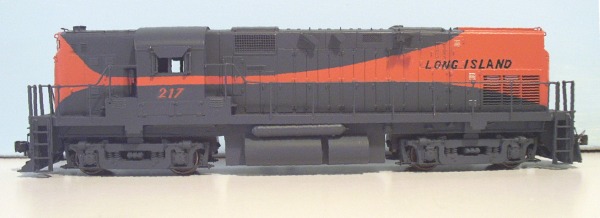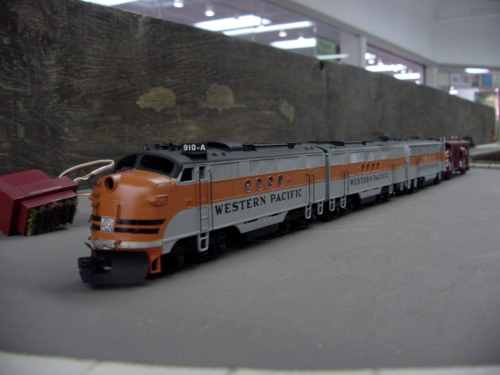10-28-2011, 02:09 PM
In addition to what jwb posted;
I have been using the blue painter's tape, since it first came out, and have had no problems with the tape ( the way I have applied it ? sometimes there's a problem there ) .
Any time I'm working with a curve, or on an irregular surface, or "the nose of a F unit", I will first mask off the area using 3/32" to 1/8" wide strips of tape ( apply tape to a small glass plate, and then with a straight edge, and a sharp #11 blade, pre-cut the tape strips ) which can be curved better that the full width. Then, the rest of the unpainted area can be masked off from those thin "edge strips".
For single, or multiple stripes. Cut strips of masking tape, the width of the stripe, and apply to the loco/car/whatever.
Next, if multiple stripes, cut tape strips the width of the space between, and apply, or if just a single stripe, apply a strip of tape on both sides, then, thin tape strips can be used to apply paper masks for the rest of the "unpainted" area.
Remove the "stripe" tape strips, and shoot...as jwb stated, with enough air that the paint is almost dry as it hits the surface.
Yes. a bit of practice with this method is highly recommended, as well as a last minute burnishing of all the edges.
A clear spray could also be used to seal the tape edges, instead of the base, or body, color. In many cases this is absolutely necessary. You will eventually learn where and when you an get away with not sealing the edges.
The masking for the orange stripe/nose of these WP FTA+B - F7A was done with blue painter's tape:

As was the orange "Flow-through" on the LIRR C-420 kitbash:

I have been using the blue painter's tape, since it first came out, and have had no problems with the tape ( the way I have applied it ? sometimes there's a problem there ) .
Any time I'm working with a curve, or on an irregular surface, or "the nose of a F unit", I will first mask off the area using 3/32" to 1/8" wide strips of tape ( apply tape to a small glass plate, and then with a straight edge, and a sharp #11 blade, pre-cut the tape strips ) which can be curved better that the full width. Then, the rest of the unpainted area can be masked off from those thin "edge strips".
For single, or multiple stripes. Cut strips of masking tape, the width of the stripe, and apply to the loco/car/whatever.
Next, if multiple stripes, cut tape strips the width of the space between, and apply, or if just a single stripe, apply a strip of tape on both sides, then, thin tape strips can be used to apply paper masks for the rest of the "unpainted" area.
Remove the "stripe" tape strips, and shoot...as jwb stated, with enough air that the paint is almost dry as it hits the surface.
Yes. a bit of practice with this method is highly recommended, as well as a last minute burnishing of all the edges.
A clear spray could also be used to seal the tape edges, instead of the base, or body, color. In many cases this is absolutely necessary. You will eventually learn where and when you an get away with not sealing the edges.
The masking for the orange stripe/nose of these WP FTA+B - F7A was done with blue painter's tape:
As was the orange "Flow-through" on the LIRR C-420 kitbash:
We always learn far more from our own mistakes, than we will ever learn from another's advice.
The greatest place to live life, is on the sharp leading edge of a learning curve.
Lead me not into temptation.....I can find it myself!
The greatest place to live life, is on the sharp leading edge of a learning curve.
Lead me not into temptation.....I can find it myself!



